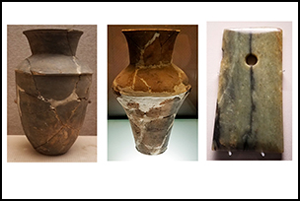Published online by Cambridge University Press: 29 November 2023

The late third-millennium BC Longshan period was a crucial time for state formation in central China. During these centuries, long-distance networks expanded and shared material culture and then cultural practices spread across wider areas precipitating social and ideological developments that presaged the rise of states and cities on the Central Plain. In this research, the authors use multiple (strontium, oxygen and carbon) isotope analyses from the dental enamel of 67 individuals buried at the Xiajin cemetery, Shanxi Province. The results indicate significant long-distance migration among females during the Longshan period, which the authors interpret as evidence of exogamous marriage for political alliance-building—a phenomenon found more widely across Eurasia at the start of the Bronze Age.